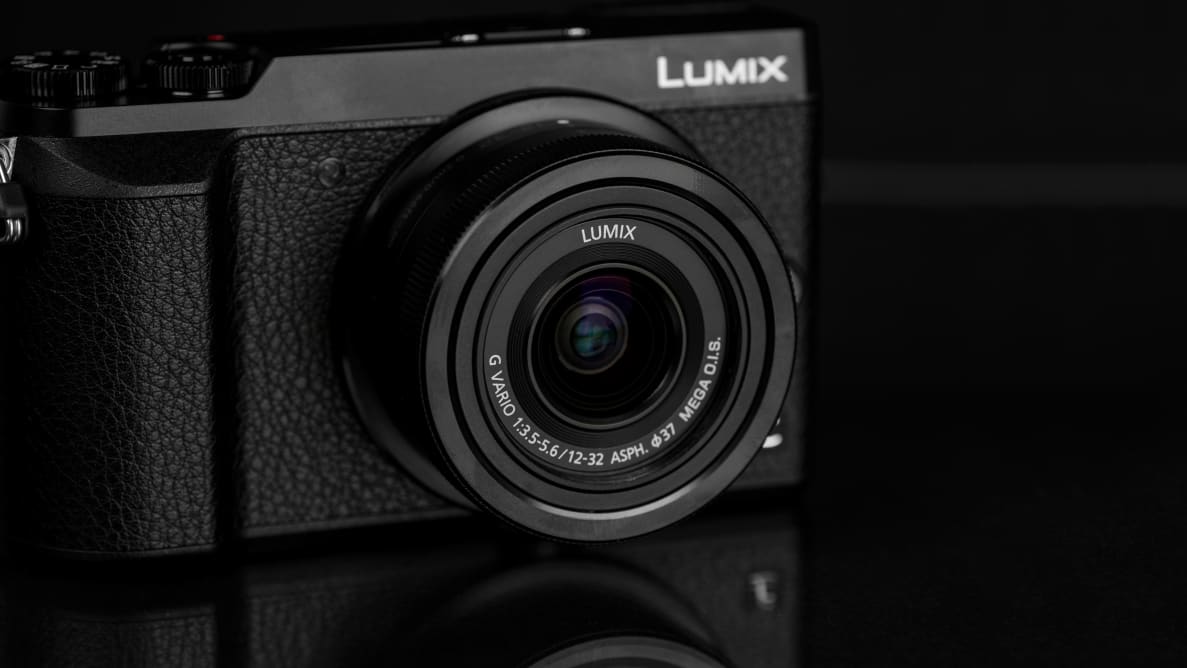Pros
Cons
So when a camera like Panasonic's Lumix GX85 ($799 with 12-32mm f/3.5-5.6 kit lens) comes along with 4K video, top-of-the-line image stabilization, and a boatload of forward-thinking features; it's got my undivided attention.
If you're okay without weather-sealing, this is the diamond in the rough—the GX85 has all of Panasonic's high-end features and decent performance all at an accessible cost. For anyone looking to save a buck and go with a sub-$1,000 camera, you're not going to find a more affordable option with this many features.
Design & Handling
Bricks are back and better than ever
Anyone who's ever picked up a Panasonic mirrorless camera will instantly know their way around the GX85. Equal parts Panasonic Lumix GX7 and Lumix GM5, the GX85 boasts a near-identical control scheme to both. A bit smaller than Panasonic's DSLR-like Lumix GH4 and the shockingly bulky Lumix GX8, but the GX85 bears a certain heft to it that makes it feel more like a traditional shooter than its all-plastic predecessors.
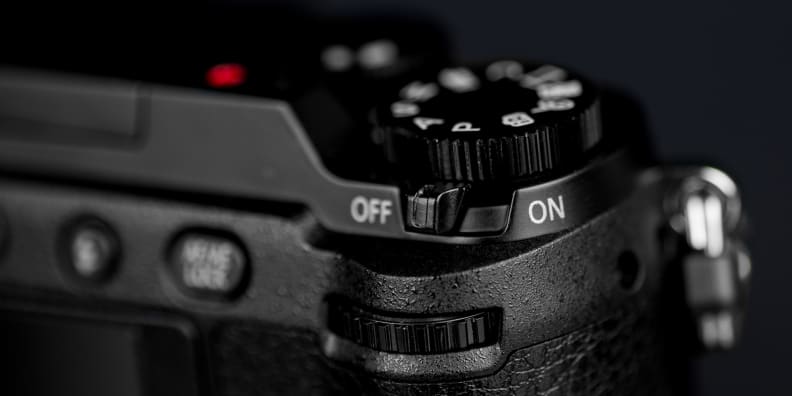
The power switch makes its return from the GX7.
Though the camera body has some bulk to it, the controls can seem a bit cramped at times—I had a lot of trouble using both control wheels at the same time, for example. If you're going to stick in aperture-priority or any one of the creative modes, this won't be much of an issue for you, but I don't have tiny hands or anything.
Like the lower-end cameras, the GX85 has no weather sealing, nor does it have a bevy of ports on the side meant for pro videographers, but the camera itself is more than capable of taking some really fantastic shots. I say this because the GX85 comes specced-out with some of Panasonic's best features like dual (body+lens) stabilization, the full range of 4K photo features, and post-focus. Despite this being a somewhat budget camera, its performance is anything but.
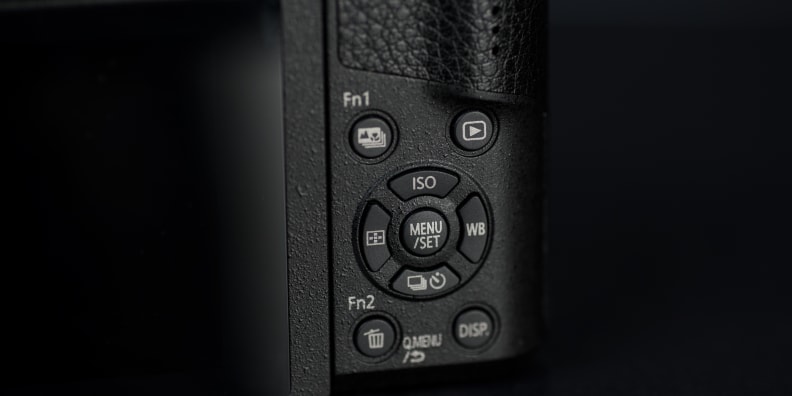
The rear control cluster is very familiar.
When I first took the GX85 out of the box, it felt like I was holding a more sanely-sized Panasonic Lumix GM5. While I appreciate that tiny camera's convenience, the GX85 is quite a bit easier to latch onto. That is, until your hands start to sweat. But for most of my week I never really paid much mind to the little stuff—this is a camera that does a lot with what it has.
Pop the lens off and you'll see the 16-megapixel Micro Four Thirds sensor. Though not the highest-res sensor in its given format, we've found time and again that it's a solid option for the Micro Four Thirds system. Especially with a processor as capable as Panasonic's Venus Engine—you need a lot of power to handle shooting 4K video and several of the creative modes—not to mention 6+fps when shooting JPG+RAW at the best quality available. If it wasn't obvious, this is a camera you don't skimp on the SD card for—you need a UHS-I at least to keep up.
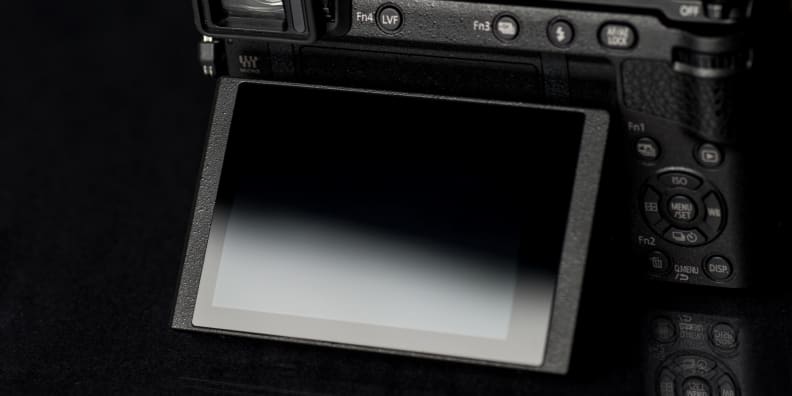
A tilting LCD is a big boon for shooting at off angles.
But I think my favorite feature on the GX85 is exactly what I liked about the Panasonic GX8: the touchscreen features. In addition to being able to autofocus using nothing but the live view, you can also drag your thumb along the screen while you're using the EVF to select a new AF point. It's a great feature if you're shooting in bright light and need to absolutely nail your focus quickly.
{{ photo_gallery "design" }}
Shooting Experience
As unique as it is fascinating
While the price point belies what the camera can actually do, it's worth noting that this isn't a camera that cuts corners to become affordable. You can do pretty much anything you want with this camera body without any obvious tradeoffs.
So why does this stand out from the budget crowd of Micro Four Thirds cameras? In a word: Features. What the GX85 has—and all those affordable Olympus cameras out there don't—is a bevy of high-end features that just aren't found on many other cameras. For example, the dual body+lens stabilization system is found on only a handful of Panasonic cameras, and the 4K photo features that allow you to pull 8-megapixel stills from video or focus your photos after the fact.
Of course, I wanted to see just how well the dual-IS (lens and body working in tandem) actually works. To stress the system as much as I humanly could in daylight, I grabbed a 100-400mm lens, 60mm f/2.8, and the camera's kit lens and went for a trek across the harbor.
Starting at Piers Park in Boston, I attached the Panasonic Leica DG Vario-Elmar 100-400mm f/4-6.3 ASPH. POWER O.I.S. Lens and took aim at Boston proper to see just how difficult it'd be to get a usable shot at 400mm. Obviously, this is a rather extreme thing to do—something nobody else is probably going to do on the reg with a GX85.

Shooting from across the Boston Harbor, the GX85 works well with even expensive super-telephoto lenses.
While it's not perfect, I'm extremely impressed with the results. If you were taught the 1/focal length rule you can safely forget it if you have a GX85 and a Panasonic lens with Power OIS. Even when using a focal length as extreme as 400mm on a body with a 2x crop factor, the dual-IS was able to return decently sharp shots all the way down to 1/30th of a second. That's without a tripod, too. If I shot on the exhale, I could sometimes get 5 full stops slower than a non-stabilized rig would be. That's insane. I suppose had I shot at night, the results might have been worse, but I was able to slow the shutter down far enough that motion blur was more of a problem than camera shake.
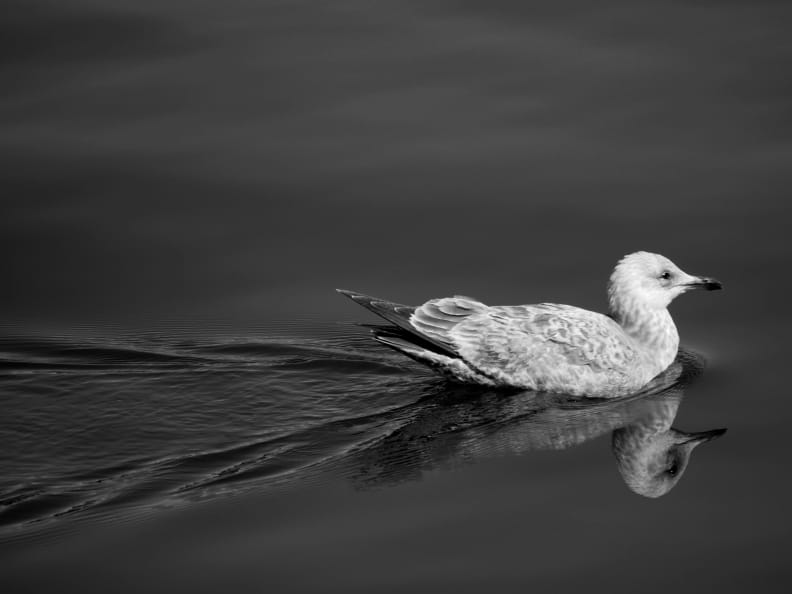
The GX85 has good enough hardware to hang tough with the rest of the Micro Four Thirds crowd.
I'm a fairly seasoned photographer, and even I'm impressed by how much these features change my shooting behavior on a day-to-day basis. It's a real treat to be able to use the EVF and the touchscreen in tandem to move my focus point on the fly, or lean on the dual-IS and stop worrying about how slow my shutter speed is—most of the time.
{{ photo_gallery_fullscreen "sample-photo" }}
Performance
Get comfortable, there's a lot to cover here
In addition to all the features, the GX85 is a fairly solid performer, too. Taking it through a spin in our labs show a competent camera that meets or exceeds most of the benchmarks we've come to expect from a Micro Four Thirds camera. In particular, the GX85 does very well at maintaining sharp, relatively noise-free shots, and the automatic white balance is a champ in fluorescent or naturally-lit scenes.
It's no real surprise, given Panasonic's using a lot of off-the-shelf parts from other cameras in the sub-$1,000 price point. The company knows where to save itself the trouble and where to innovate, and the 16-megapixel sensor is still extremely competitive. Really, the biggest hindrances to your photos are going to very much be lens-related.
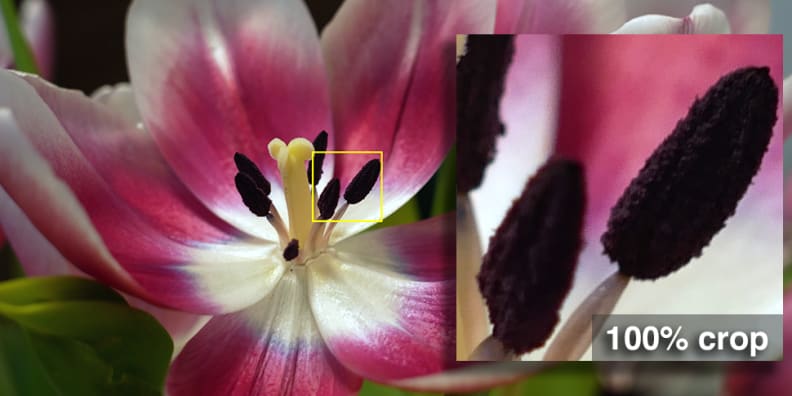
Post-focus is an incredible tool for macro photographers.
Most people are going to be using either that compact kit lens, or another smaller piece of glass. The upshot is that the GX85 seems to perform about as expected for a 16-megapixel Micro Four Thirds body—lenses tend to be the only real bottleneck there. Though our lab testing was performed with the kit lens, I also had good results with the bargain superstar Sigma Art 60mm f2.8 DN, and because the GX85 can use just about any Micro Four Thirds lens out there, you shouldn't be left wanting for options.
That 12-32mm kit lens is surprisingly good for a throw-in lens—it's very compact and it keeps its flaws hidden pretty well. But the problem here isn't so much a fault of the lens, it's that it's not enough for everybody. Whether you're a wildlife photographer or portrait shooter, you're eventually going to want a step up with a wider aperture, longer focal length, and/or Panasonic's Power OIS.

Colors tend to be oversaturated a little bit by the GX85, but you're not likely to notice it much.
Color accuracy is a little bit of a letdown, but it's still miles ahead of many entry-level cameras. In ideal situations, color is perfectly fine, but when the ambient lighting condition is too warm—think "incandescent bulbs"—the errors become extremely distracting under the pall of an orange glow. This is an near-ubiquitous problem, but it's easy to remedy by shooting in RAW or using a custom white balance measurement.
Burst speeds are super fast for a system camera, topping 6fps with the highest-quality JPG+RAW files. Just be sure your card can keep up—otherwise those speeds will be bottlenecked. It's a good idea anyway, because you need a fast SD card to handle the 4K video or the 60fps 1080p shooting as well. Which, by the way, is very good—motion and sharpness are well rendered, and the autofocus tends not to hunt that much.
Conclusion
A strong contender for your hard-earned dollar
I'm not gonna mince words: It's been a long time since I've had this much fun with an entry-level camera. I say that as someone who has handled just about every high-end system camera out there—the GX85 is a special camera, and it shows in the lab and out.
Not only does the GX85 offer a huge step up compared to a point-and-shoot camera, but it's quite compact and has all the creature comforts you could want. Better yet, while you'd normally expect some measure of compromise at this price point, there's very little of that here. In fact, the features that do make the cut (like dual image stabilization and 4K photo) are really going to help shooters of all levels get the shot they want—especially with fast-moving subjects or in low light.
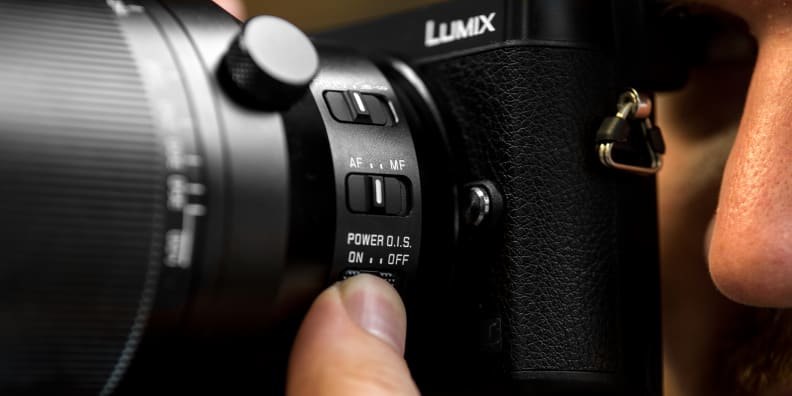
The GX85 is a famous partner for both cheap and expensive lenses.
{{amazon name="Sigma 30mm f2.8 DN Lens (Micro FT)", asin="B00BQXL6OY", align="right"}}Though the kit lens leaves a bit to be desired, there are plenty of affordable-yet-great lenses out there for the Micro Four Thirds ecosystem. You can easily grab a third-party prime lens like the Sigma ART lenses on the cheap and get a ridiculous bang for your buck. However, you will need to pony up quite a bit if you want to take advantage of the dual-IS feature, because it requires Panasonic-branded lenses with Power OIS.
At $799 with a kit lens, you're gonna have a tough time finding a similar blend of performance, size, and features. Truth be told, you'll have to make some serious tradeoffs unless you can find a Panasonic Lumix G7 on sale somewhere. Otherwise, you'll be making it rain at the checkout counter for another camera that doesn't have the same features as this little guy.
Even though the similarly-priced Olympus OM-D E-M10 Mark II offers a comparable amount of features and somewhat better performance, you'd be sacrificing 4K video, the 4K photo features, and Dual-IS. The biggest draw Olympus' competitor can offer you is about $100 more to spend on a better lens up-front, which is tempting—but the additional features of the GX85 are more than worth the extra money. If you want a sub-$1,000 camera that will be keep you happy for the long haul, the GX85 is just about the best option on the market right now.
Related video
{{brightcove '4638152055001'}}
By the Numbers
Though it doesn't have the highest-res sensor, or top-of-the-line hardware, the GX85 is a perfect example of how to squeeze blood from a stone. It does a lot with what it has, and consequently, is one of the better cameras on the market from a performance standpoint.
Nota bene: These tests were performed with a near-final version of the camera's firmware. We will be re-testing in the days to come to make sure the performance metrics reported here are accurate, but we've been led to believe that this is roughly what you can expect from the Panasonic Lumix GX85.
Color and White Balance
Despite being the weakest performance point of the GX85, color is fairly decent. With a ∆C 00 (saturation corrected) error of 2.53 and an overall saturation of 110.5%, you can reliably expect your shots to turn out the way you expect them to.
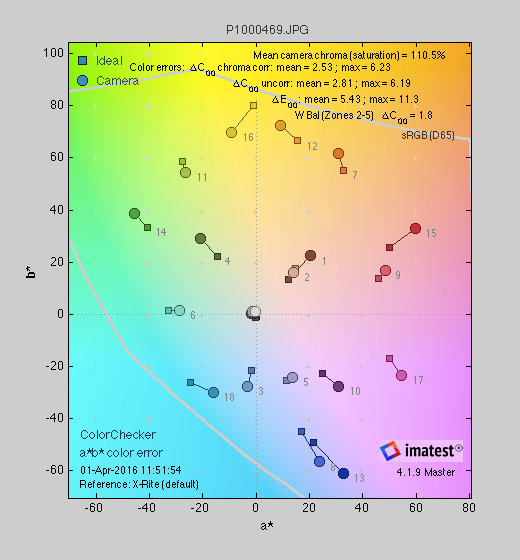
Blues and Reds are a little oversaturated, but color is mostly accurate with the Standard color profile.
You may notice that reds and blues are a touch oversaturated, but most people bump these a little bit in post to begin with. Should you want to change this, you can always shoot in RAW as well.
White balance is a mixed bag, as always, because the camera struggles greatly with incandescent light—sometimes reaching errors of 1700 kelvin. In fluorescent lighting and daylight, the color errors will be kept under 300 kelvin, which is super good for a system camera.
Sharpness
Like I mentioned before, the albatross across the neck of the GX85 is the kit lens. But it's really not that bad. The tandem routinely tops 2200 line widths per picture height at most settings, and errors like chromatic aberration and distortion are kept to a relative minimum (once you zoom out a little bit, anyway).
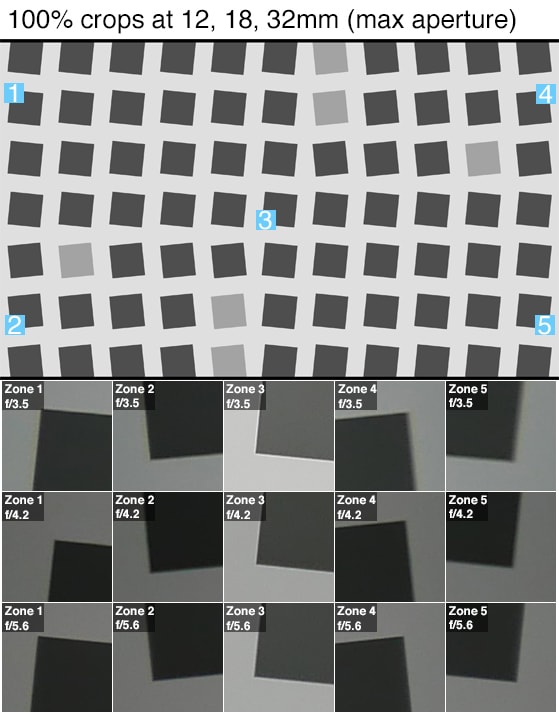
The kit lens is nothing special, but at maximum aperture most shots you take will be decently sharp.
The camera body itself does oversharpen images a little bit when exporting JPEGs, but you can avoid the minor haloing altogether if you shoot in RAW.
I will point out that at the absolute extremes, there is a bit of coma at the shortest focal length. But that's really about as minor a problem as you can possibly have, so we're willing to give it a pass. Just be sure to keep the NR at 0 to avoid some fine detail getting lost in the shuffle and you'll be fine.
Video
Boy howdy this is a great option for consumer 4K.
In bright light, we recorded just over 1500 line pairs per picture height, which fell to about 1200 in low light (60 lux). I found this to be a little farfetched, but then I tested the low light sensitivity. Able to reproduce a 50 IRE 4K image at 7 lux, this is one sensitive piece of electronics.
If you're more interested in HD content, the GX85 is a rockstar here, too. You can easily record 1080/60p video clips if you want to avoid any motion blur, and you can switch between file formats and framerates quite easily.
Noise
The noise reduction on the GX85 is a little aggressive, but it results in relatively noise-free shots. You won't notice much grain unless you really crank the ISO past 3200.
If you want to leave your camera on an easier setting than straight-up "manual," you can set the automatic ISO limit by opening the menu and futzing around. It's a fairly simple process, and a good idea if the camera is going to get passed around a lot.
Meet the tester
A seasoned writer and professional photographer, Chris reviews cameras, headphones, smartphones, laptops, and lenses. Educated in Political Science and Linguistics, Chris can often be found building a robot army, snowboarding, or getting ink.
Checking our work.
Our team is here to help you buy the best stuff and love what you own. Our writers, editors, and experts obsess over the products we cover to make sure you're confident and satisfied. Have a different opinion about something we recommend? Email us and we'll compare notes.
Shoot us an email
